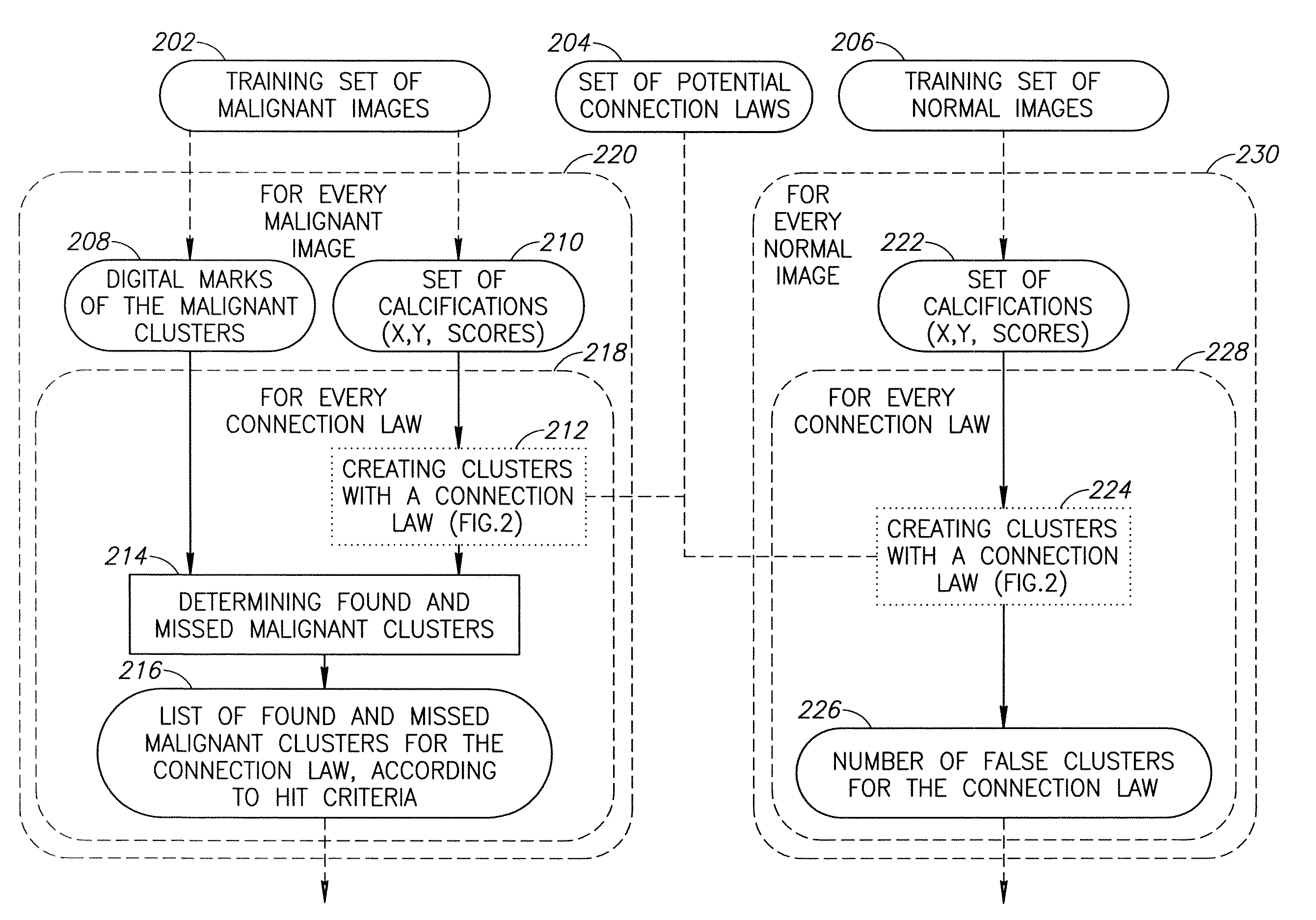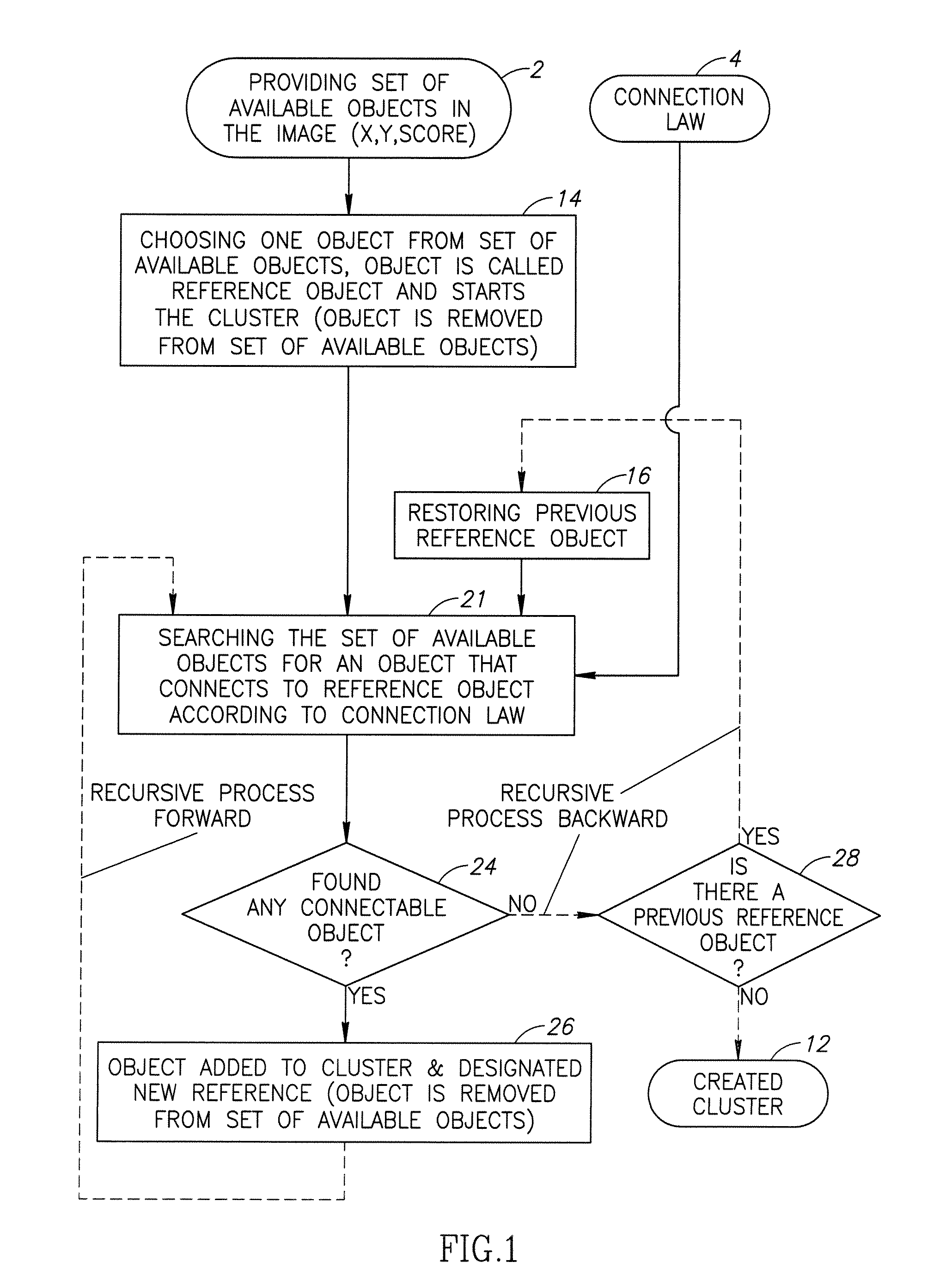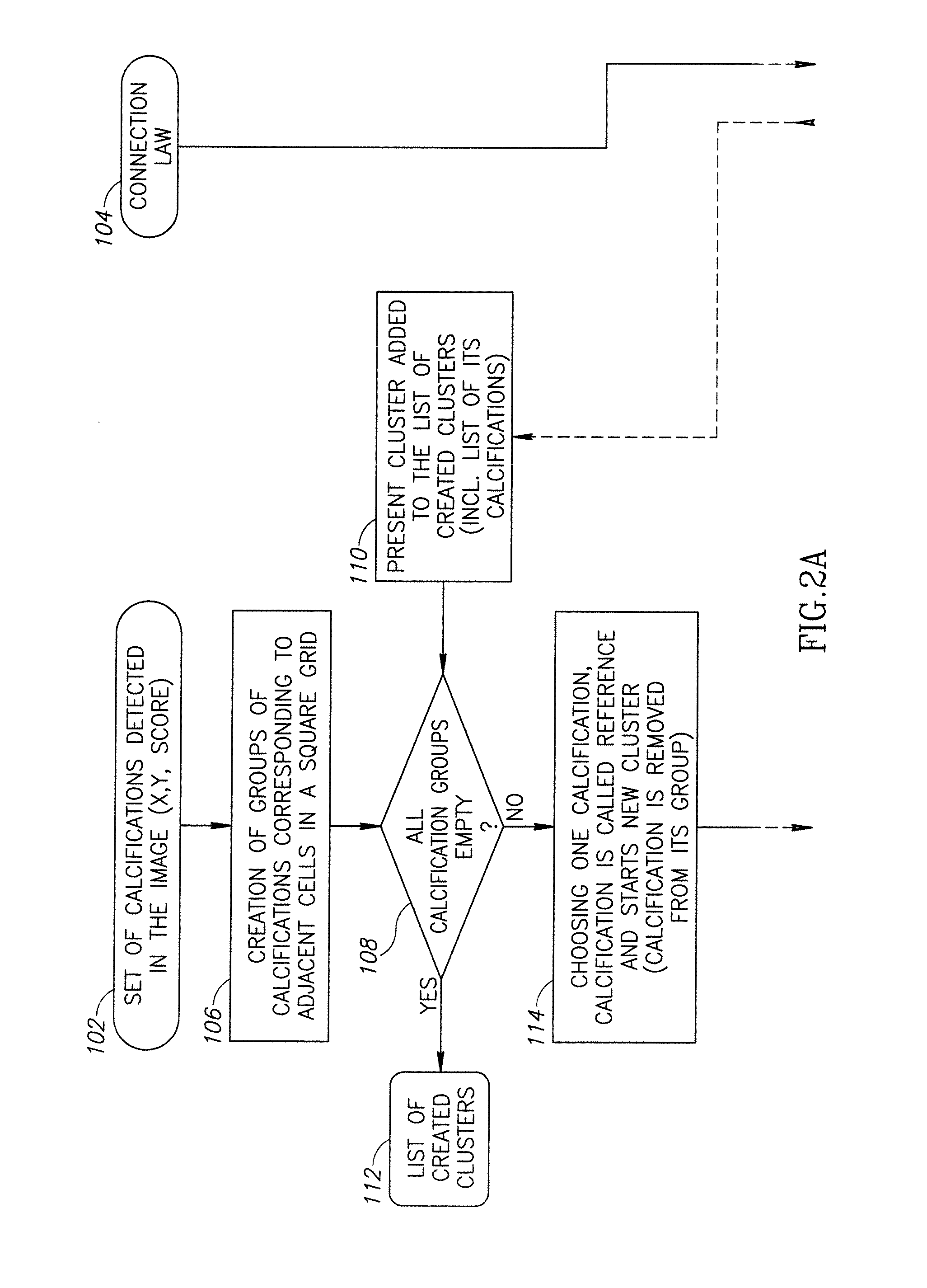Clusterization of Detected Micro-Calcifications in Digital Mammography Images
a microcalcification and digital mammography technology, applied in image enhancement, image analysis, instruments, etc., can solve the problems of difficult interpretation of mammographic lesions, high subjective analysis, and the need for advanced diagnostic tools, so as to achieve the effect of saving time and effective analysis
- Summary
- Abstract
- Description
- Claims
- Application Information
AI Technical Summary
Benefits of technology
Problems solved by technology
Method used
Image
Examples
Embodiment Construction
[0053]In what is discussed herein, the objects in digital images will generally be referred to as micro-calcifications (MCs) and the clusters herein as micro-calcification clusters (MCCs). It should readily be understood that the method and techniques discussed herein may be used with other objects found in digital images for which clusterization is required. In such cases, a portion of the available objects are false objects which should ideally be rejected in the clusterization process.
[0054]In general, a CAD process used in detecting MCs and MCCs in mammogram digital images needs to employ the same criteria used by radiologists for defining potentially malignant lesions. Therefore, from a CAD perspective, a micro-calcification cluster (MCC) is deemed to consist of an ensemble of MCs in which there is a continuous path of connected MCs linking any two MCs in the MCC. A maximum distance, typically but without intending to limit the invention, of 1 cm is allowed between two connecte...
PUM
 Login to View More
Login to View More Abstract
Description
Claims
Application Information
 Login to View More
Login to View More - R&D
- Intellectual Property
- Life Sciences
- Materials
- Tech Scout
- Unparalleled Data Quality
- Higher Quality Content
- 60% Fewer Hallucinations
Browse by: Latest US Patents, China's latest patents, Technical Efficacy Thesaurus, Application Domain, Technology Topic, Popular Technical Reports.
© 2025 PatSnap. All rights reserved.Legal|Privacy policy|Modern Slavery Act Transparency Statement|Sitemap|About US| Contact US: help@patsnap.com



